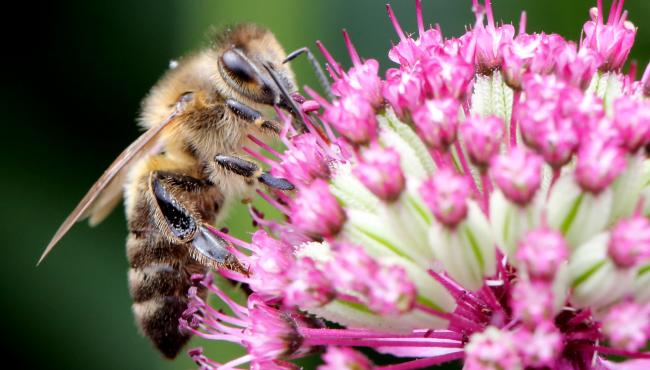-
Tips for becoming a good boxer - November 6, 2020
-
7 expert tips for making your hens night a memorable one - November 6, 2020
-
5 reasons to host your Christmas party on a cruise boat - November 6, 2020
-
What to do when you’re charged with a crime - November 6, 2020
-
Should you get one or multiple dogs? Here’s all you need to know - November 3, 2020
-
A Guide: How to Build Your Very Own Magic Mirror - February 14, 2019
-
Our Top Inspirational Baseball Stars - November 24, 2018
-
Five Tech Tools That Will Help You Turn Your Blog into a Business - November 24, 2018
-
How to Indulge on Vacation without Expanding Your Waist - November 9, 2018
-
5 Strategies for Businesses to Appeal to Today’s Increasingly Mobile-Crazed Customers - November 9, 2018
UN report warns of fewer pollinators
Globally over the last 50 years, the number of managed honeybee hives – ones where humans keep them either as a hobbyists or as professional pollinators – has increased, but it has dropped in North America and Europe, where there is the most data, the report said.
Advertisement
The report by the IPBES, which was established under United Nations auspices in 2012 to assess the state of ecosystems and biodiversity, stopped short of declaring a full-scale threat to food supplies but stressed the importance of protecting pollinators to ensure stable fruit and vegetable output. That’s an industry with an estimated annual value between $235 billion and $577 billion globally.
The assessment report, released on February 26 and which analyzed many existing scientific studies, gained approval from a congress of 124 member nations in the fourth plenary meeting of the IPBES in Kuala Lumpur. It’s an effort similar to what the United Nations has done with global warming, putting together an encyclopedic report to tell world leaders what’s happening and give them options for what can be done. Plants that rely on pollination make up to 35% of worldwide crop production volume.
Sixteen percent of vertebrate pollinators – birds, bats, anything with a backbone – are threatened with global extinction.
The report from the Intergovernmental Science-Policy Platform on Biodiversity and Ecosystem Services (IPBES) gathered evidence from studies that have already been conducted by other groups and came to the conclusion that 40% of invertebrate pollinators (bees, butterflies, beetles and others) are heading for extinction, while around 16% of vertebrate pollinators like bats and hummingbirds are in danger. However, the long-term impact on bee populations is still wildly unknown.
“Planting flowers that pollinators use for food, or looking after their habitats in urban and rural areas, will help”. In the past fifty years, the amount of human agriculture reliant on pollinators has risen by 300 percent.
“Their decline is primarily due to changes in land use, intensive agricultural practices and pesticide use, alien invasive species, diseases and pests, and climate change”, Watson added.
“Pollinators are important contributors to world food production and nutritional security”, assessment co-Chair Vera Lucia Imperatriz-Fonseca says in a statement. The assessment cites about 3,000 scientific papers and, researchers say, “includes information about practices based on indigenous and local knowledge from more than 60 locations around the world”.
At the same time, there are huge gaps in understanding the effect of genetically modified crops on pollinators. “These practices include traditional farming systems; maintenance of diverse landscapes and gardens; kinship relationships that protect specific pollinators; and cultures and languages that are connected to pollinators”.
Advertisement
There are actions that Governments around the world could take, says Dr Dicks, such as raising the standards of pesticide and GMO risk assessment, or supporting training for farmers in how to manage pollination and reduce pesticide use.




























